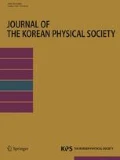Abstract
When evolution algorithms are used to unfold the neutron energy spectrum, fitness function design is an important fundamental work for evaluating the quality of the solution, but it has not attracted much attention. In this work, we investigated the performance of eight fitness functions attached to the genetic algorithm (GA) and the differential evolution algorithm (DEA) used for unfolding four neutron spectra selected from the IAEA 403 report. Experiments show that the fitness functions with a maximum in the GA can limit the ability of the population to percept the fitness change, but the ability can be made up in the DEA. The fitness function with a feature penalty term helps to improve the performance of solutions, and the fitness function using the standard deviation and the Chi-squared result shows the balance between the algorithm and the spectra. The results also show that the DEA has good potential for neutron energy spectrum unfolding. The purposes of this work are to provide evidence for structuring and modifying the fitness functions and to suggest some genetic operations that should receive attention when using the fitness function to unfold neutron spectra.







Change history
21 January 2021
The article was revised to change copy right year.
References
R.L. Bramblett, R.I. Ewing, T.W. Bonner, Nucl. Instr. Meth. 9, 1 (1960)
J. B. Yang et al., Patent No. ZL201610264803.7 (2018) (in Chinese)
J. B. Yang et al., Patent No. US10656292B2 (2020)
D.W. Freeman, D.R. Edwards, A.E. Bolon, Nucl. Instrum. Meth. Phys. Res. 425, 549 (1999)
K. Chang et al., J. Korean Phys. Soc. 74, 542 (2019)
H. Shahabinejad, M. Sohrabpour, Radiat. Phys. Chem. 136, 9 (2017)
D. Zhao et al., Nucl. Instr. Meth. Phys. Res. 933, 56 (2019)
J. Wang et al., Appl. Radiat. Isot. 147, 136 (2019)
S. Kazarlis, V. Petridis, Parallel Problem Solving from Nature-PPSN V (Springer, Berlin, Heidelberg, 2006), pp. 211–220
D. E. Goldberg, genetic algorithms in search, optimization, and machine learning. Addison-Wesley Publishing Company, Boston 1:1 1–15 (1989)
A. E. Eiben, and J. E. Smith, Introduction to evolutionary computing. Springer-Verlag, Berlin, Heidelberg 4: 4 66 (2015)
R. Storn, K. Price, J. Glob. Optim. 11, 341 (1997)
J.A. Santos et al., Appl. Radiat. Isot. 71, 81 (2012)
X. Wang et al., Nucl. Sci. Tech. 25, 1 (2014)
S.M.T. Hoang et al., J. Radioanal. Nucl. Chem. 318, 631 (2018)
D. Wang, B. He, Q.H. Zhang, Atomic Energy Sci. and Tech. 44, 1270 (2010). ((in Chinese))
H. Shahabinejad, S.A. Hosseini, M. Sohrabpour, Nucl. Instr. Meth. Phys. Res. 811, 82 (2016)
IInternational Atomic Energy Agency, Compendium of neutron spectra and detector responses for radiation protection purposes: supplement to technical reports series, No. 403 (2001)
Acknowledgements
This work was supported by the National Natural Science Foundation of China (No. 41774120), by the Sichuan Science and Technology Program (2018TJPT0008, 2019YFG0430) and by the Opening Fund of Provincial Key Lab of Applied Nuclear Techniques in Geosciences (No. gnzds201903) of Applied Nuclear Technology in Geosciences Key Laboratory of Sichuan Province, Chengdu University of Technology
Author information
Authors and Affiliations
Corresponding author
Additional information
Publisher's Note
Springer Nature remains neutral with regard to jurisdictional claims in published maps and institutional affiliations.
Rights and permissions
About this article
Cite this article
Li, R., Yang, J., Tuo, X. et al. Research on Fitness Function of Two Evolution Algorithms Used for Neutron Spectrum Unfolding. J. Korean Phys. Soc. 78, 109–115 (2021). https://doi.org/10.1007/s40042-020-00005-x
Received:
Revised:
Accepted:
Published:
Issue Date:
DOI: https://doi.org/10.1007/s40042-020-00005-x

